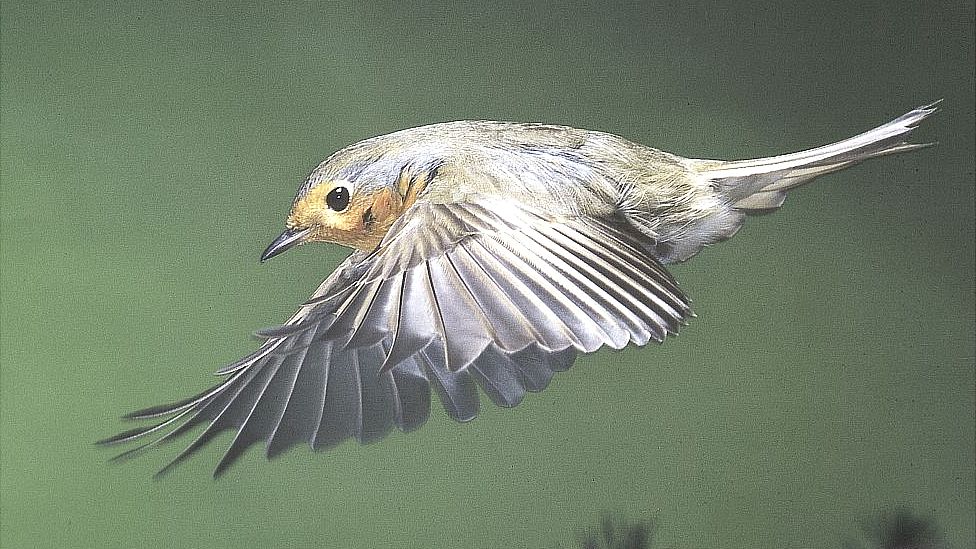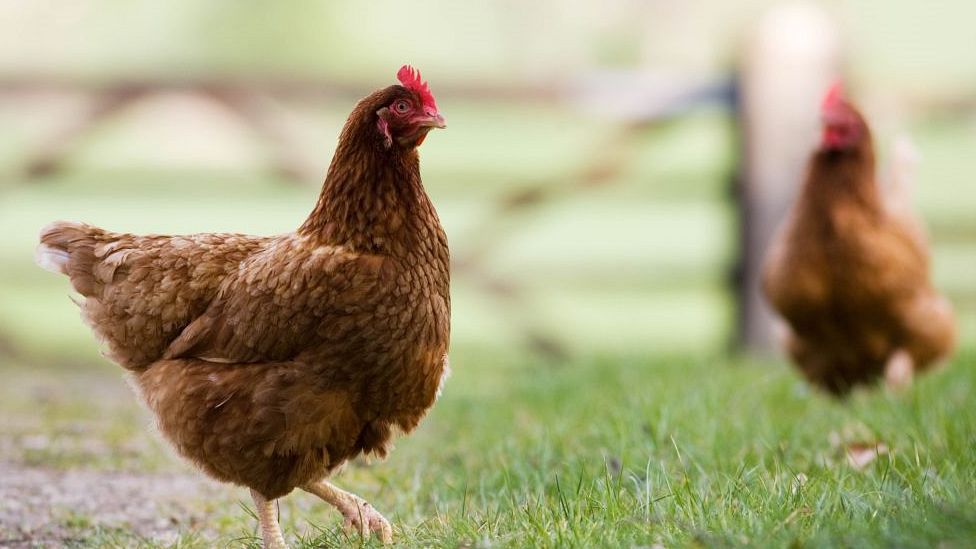
The mystery of how birds migrate long distances over land and sea is a step closer to being cracked.
By studying robins, scientists have found clues to how birds sense the Earth's magnetic field.
Just as you might reach for a magnetic compass to find which way is north or south, birds are thought to have an in-built "living compass".
A chemical in the eye that is sensitive to magnetism could be proof of this theory, according to a new study.
Peter Hore, professor of chemistry at the University of Oxford, said it could be that birds can "see" the Earth's magnetic field, although we don't know that for sure.
"We think we may have identified the molecule that allows small migratory songbirds to detect the direction of the Earth's magnetic field, which they undoubtedly can do, and use that information to help them navigate when they migrate thousands of kilometres," he told BBC News.
For decades, scientists have been investigating how animals such as birds, sea turtles, fish and insects sense the Earth's magnetic field and use it to find their way.

The European robin is a stalwart of studies into the in-built "living compass" birds may use to orient themselves using the Earth's magnetic field.
One chemical contender is a molecule in the retina of the eye known as a cryptochrome.
The Oxford team studied a purified form of the molecule in the lab to see whether it was fit for purpose as a magnetic sensor. They found it had the ability to form pairs of "radicals" that have high magnetic sensitivity. A radical is an atom or molecule that is highly chemically reactive.
Prof Hore said the mechanism they have been investigating involves magnetically-sensitive chemical reactions initiated by light inside the bird's eyes - in their retinas, to be precise.
"It looks possible - and I would put it no stronger than that at the moment - that these highly-specialised chemical reactions could give the bird information about the direction of the Earth's magnetic field and in that way constitute a magnetic compass," he explained.

It's thought that light striking the retina causes electrons to move within the cryptochrome molecule, triggering the production of a pair of short-lived high energy radicals, which act like microscopic magnets.
The scientists caution that there is more work to do before they can be sure of the correct mechanism and the correct molecule. But they're heartened by the fact that the molecule is more magnetically-sensitive in robins than in birds such as chickens, that don't migrate.
The robin is a familiar sight in many UK gardens, with most spending the winter in Britain.
But some robins do migrate, covering more than a hundred miles a night on migrations to warmer climes from Europe, Scandinavia and Russia.
The research is published in the journal Nature.
Follow Helen on Twitter.
https://ift.tt/3w0NuU9
Science
No comments:
Post a Comment